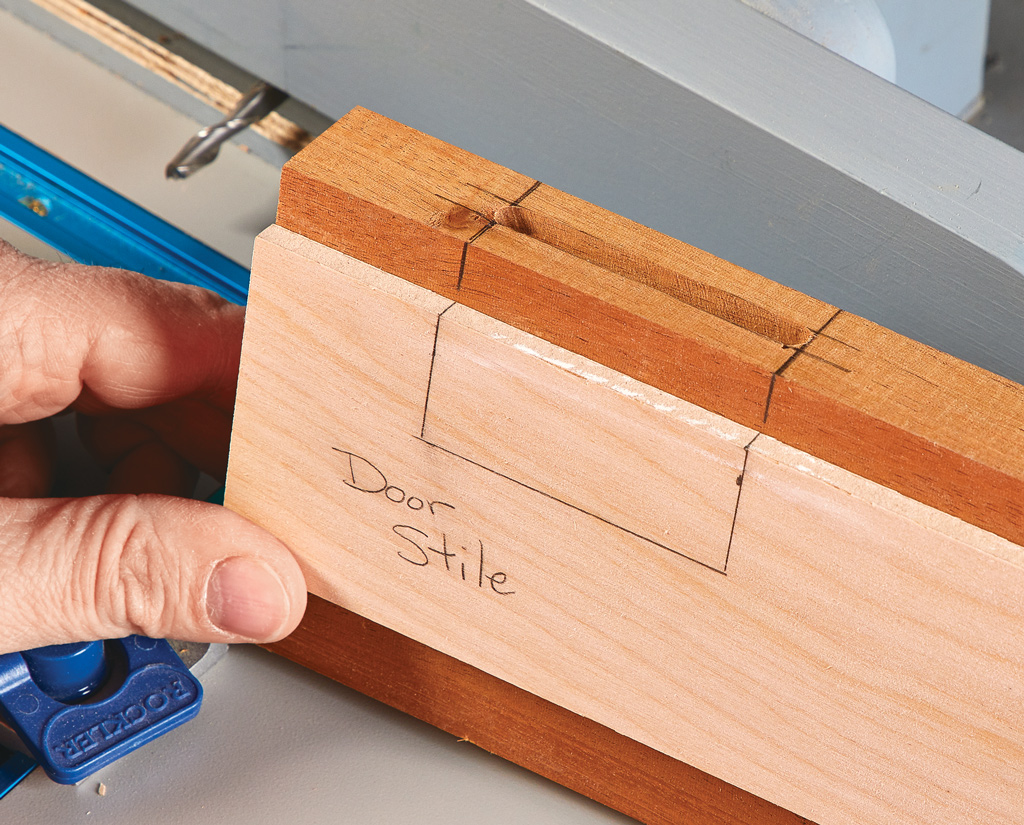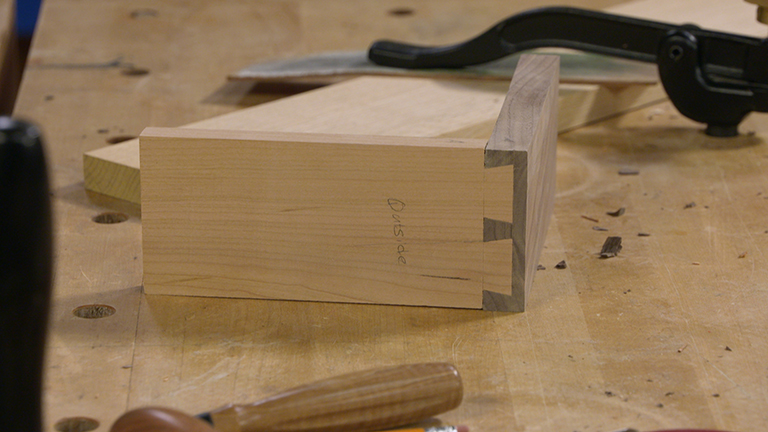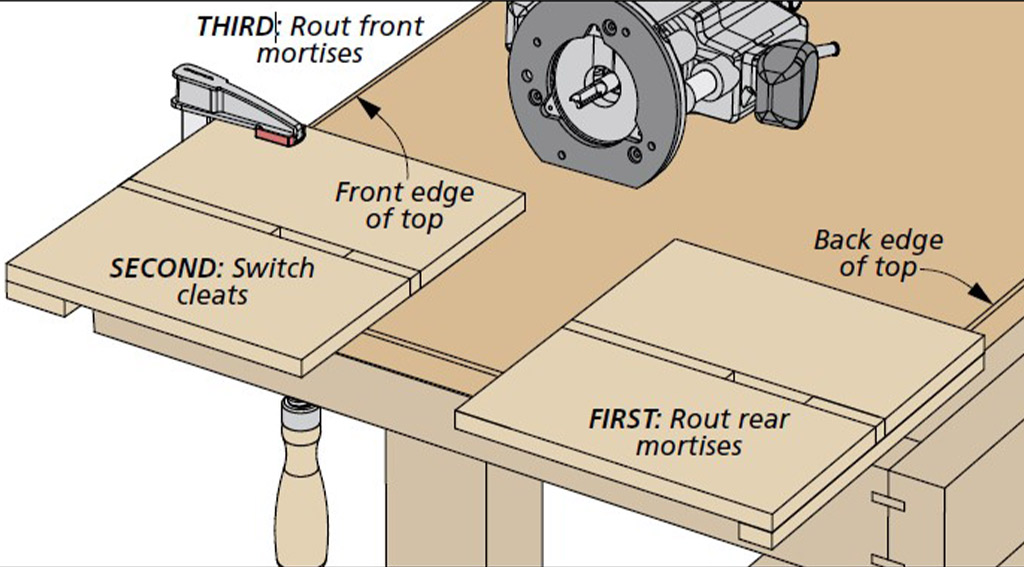When it comes to getting gap-free joints, nothing beats using a hand plane and a shooting board. The shooting board supports the workpiece as you trim the end. I use a shooting board for miter joints. The shooting board you see here is unique because it accommodates a workpiece cut to any angle. It uses a miter gauge as the fence instead of the fixed fence found on a traditional shooting board. The base is easy to make from MDF.

I started with a large piece of MDF to create the bottom layer for the base. Two narrower pieces are glued on top. The first serves as the fence for the plane to ride against. The other piece is spaced away from the first to form a slot for the miter gauge bar. You can use your miter gauge as a spacer to position this second piece while gluing it down. Finally, a dowel acts as a stop to keep the miter gauge in place during use.

This shooting board also works great for squaring up the end of a workpiece. Before trimming the end of a piece, I attach an auxiliary fence to the miter gauge. This backs up the cut to prevent tearout as the plane exits the back side of the workpiece. The end of the fence is beveled to match the angle of the workpiece. And to keep the workpiece securely in place, it helps to fasten pressure-sensitive adhesive (PSA) sandpaper to the fence. After applying a little paste wax to the base and fence, you’re ready to put the shooting board to use.













